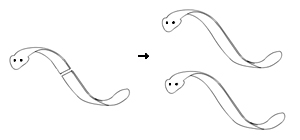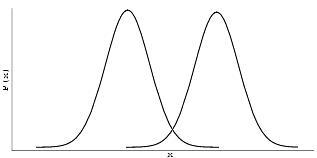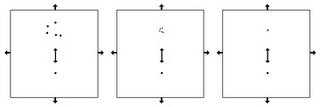state of the universe
It seems to me that most people, whether they are actively concerned about the state of the universe or not, are comfortable with the notion that a universe does indeed exist, and that this universe does have some defined, or 'actual' state to it.
However, as an entity must exist in order to possess any state at all, and as existence is wholly dependent upon interaction(1), it can be said that the state of the universe is also dependent upon interaction.
In fact, Einstein’s Theory of Special Relativity is a testament to this.
Even so, while many people may agree with the Theory of Special Relativity, they also hold the notion that there does ‘exists’ a universe, and that this universe does have some actual state about it.
In general, I have heard the argument put forth as this: “As Einstein revealed, there exists no preferred frame-of-reference within the universe, and therefore, there exists no unique frame-of-reference in which an actual state of the universe can be defined.”
However, implicitly underlying this argument lays the following notions: 1) That there is in fact a universe common to all frames-of-reference and 2) that there is a 'state' of this universe, although any two observers must disagree on its actuality.
I find the notion of an actual state of anything to be an oxymoron. I say this, as it meaningless to discuss the ‘state’ of something without implying interaction. Thus, any ‘actual’ state of the universe, in fact describes the actuality of a particular interaction, and not an intrinsic 'actual' state of interacting components.
In order to fully appreciate the relativistic nature of existence, one must take the notion that 'existence is wholly dependent upon interaction' to its logical conclusion. That is, as there are no preferred frames-of-reference by which the state of the universe can be defined, there are no preferred interactions that can establish an 'actual' state of the universe, or describe the universe as it 'really' is.
Or, to put it simply: There is no actual state of the universe.
1. Please read the post: existence and non-existence.
However, as an entity must exist in order to possess any state at all, and as existence is wholly dependent upon interaction(1), it can be said that the state of the universe is also dependent upon interaction.
In fact, Einstein’s Theory of Special Relativity is a testament to this.
Even so, while many people may agree with the Theory of Special Relativity, they also hold the notion that there does ‘exists’ a universe, and that this universe does have some actual state about it.
In general, I have heard the argument put forth as this: “As Einstein revealed, there exists no preferred frame-of-reference within the universe, and therefore, there exists no unique frame-of-reference in which an actual state of the universe can be defined.”
However, implicitly underlying this argument lays the following notions: 1) That there is in fact a universe common to all frames-of-reference and 2) that there is a 'state' of this universe, although any two observers must disagree on its actuality.
I find the notion of an actual state of anything to be an oxymoron. I say this, as it meaningless to discuss the ‘state’ of something without implying interaction. Thus, any ‘actual’ state of the universe, in fact describes the actuality of a particular interaction, and not an intrinsic 'actual' state of interacting components.
In order to fully appreciate the relativistic nature of existence, one must take the notion that 'existence is wholly dependent upon interaction' to its logical conclusion. That is, as there are no preferred frames-of-reference by which the state of the universe can be defined, there are no preferred interactions that can establish an 'actual' state of the universe, or describe the universe as it 'really' is.
Or, to put it simply: There is no actual state of the universe.
1. Please read the post: existence and non-existence.




